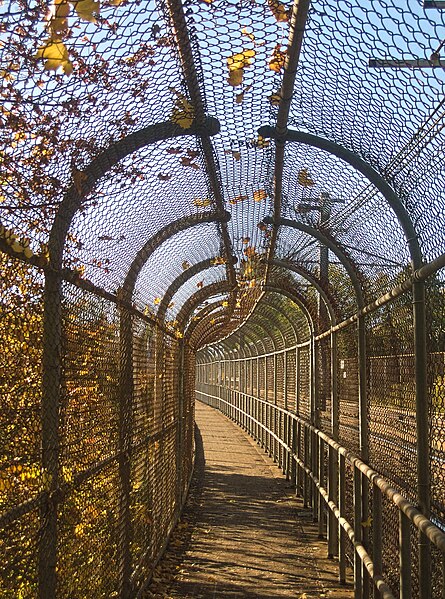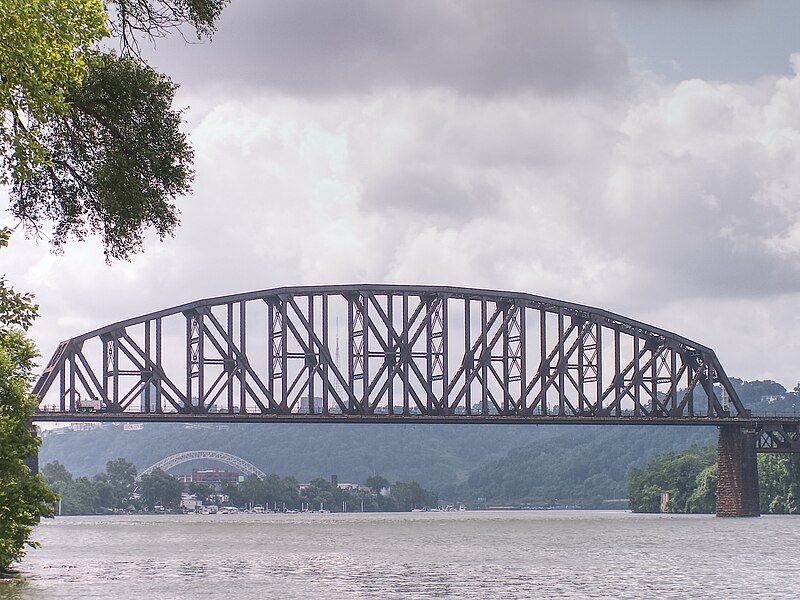
Seen from West Carson Street. This railroad bridge crosses the Ohio at Brunot Island, and therefore has two main spans; we also have pictures of the front-channel span and a view of the whole bridge from the north shore.

Seen from West Carson Street. This railroad bridge crosses the Ohio at Brunot Island, and therefore has two main spans; we also have pictures of the front-channel span and a view of the whole bridge from the north shore.

This bridge crosses the Ohio at Brunot Island, and therefore has two main spans, one for each channel. Here we see them both from California Avenue to the north. We also have pictures of the Ohio Connecting Railroad Bridge from the side.

The Fallowfield viaduct is an important transportation link, both for streetcars and for feet. It connects central Beechview to the streets on the next hill over. But old Pa Pitt admits that he publishes this photograph, not because it is useful and educational, but simply because the lines and colors made an interesting composition.

One of many bridges around here designed by George S. Richardson, the Liberty Bridge opened in 1928, connecting the Liberty Tubes (which had opened four years earlier) directly to downtown. Here we see it from the south shore of the Mon.



The Ohio Connecting Railroad Bridge was built in 1915, and it still carries freight. It crosses the Ohio at Brunot Island, so that there are two main spans, one for the front channel and one for the only slightly narrower back channel. This is the front-channel span.

